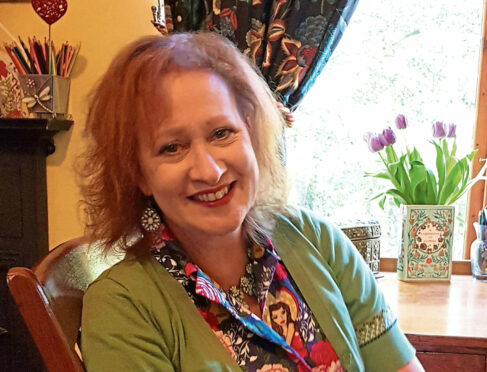
From above, the torchlight parade lacing its way through the Brandenburg Gate appears like a mesmerising river of molten metal.
On closer inspection, it is much more sinister. So arresting is the image of Berlin’s 1933 march to mark Hitler’s rise to power that it inspired the latest historical novel by Glasgow-based author Catherine Hokin.
The first in a four-part series, The Commandant’s Daughter focuses on fictional 10-year-old Hanni Foss as she stands beside her father, watching the celebrations for Germany’s new leader, blissfully unaware that her safe and idyllic childhood is about to change forever as her father becomes commandant of a concentration camp.
Mother-of-two Hokin, 60, who came across the image during a research visit to the Berlin History Museum, tells P.S: “I stood in front of the picture for so long the attendant asked me if I was OK. It’s mesmerising in terms of contrast between its beauty and the horror it actually portrays.
“One of the best viewpoints on the parade would have been from above on the balcony of the Adlon Hotel. The torches from that angle look like molten metal. It’s awe inspiring for all the wrong reasons.
“I thought of what must have it been like to stand up there as a child to watch that. It is the starting point in this story for this privileged life that is going to grow very dark for Hanni. She meets the photographer who shows her how to take a photograph of it and to understand what photography does.
“He gets her to home-in on the faces – these horrible, screaming, yelling faces are very different to the beauty of the torches.”
The author admits it’s all about what is going on beneath. She explains: “The reason I set the books in Berlin is the German experience, the concept of collective guilt for example.
“Photographers, war photographers especially, have an ability to stand behind the lens and disassociate with what they are seeing. It is an interesting way to approach the world.
“I’ve always been fascinated by the way photos are used to tell stories, particularly in war. My father was an excellent, obsessive, photographer and the idea of a little girl learning to find her voice, and reclaim her own story, through images, came from there.”
Hokin, who graduated with a history degree from Manchester University but is now studying German part-time at Glasgow University, first tried her hand at authorship in her 20s.
But work – she was in marketing and later teaching – and the arrival of her children Claire, now 31, and Daniel, 27, saw her put her writing on hold.
When her children became independent, Hokin – who grew up in the Lake District – was fired with new enthusiasm, finally writing full-time at the age of 58. Her latest novel is the fifth for Bookouture.
The author, who is married to Chicago man Robert, 65, reveals: “Daniel lives in Berlin where all my books are set. Both my children are linguists, which is something I very much encouraged.
“Germany was the very first country I went to when I was 17. There I was, this young girl from Lake District standing at the border crossing point looking at machine guns and mines. It had a huge impact on me.
“I’ve always had a love affair with the country and with Berlin in particular. My parents were children in the war and it shaped a lot of their thinking. These stories stay with you.”
Catherine Hokin, The Commandant’s Daughter, Bookouture, £8.99

Enjoy the convenience of having The Sunday Post delivered as a digital ePaper straight to your smartphone, tablet or computer.
Subscribe for only £5.49 a month and enjoy all the benefits of the printed paper as a digital replica.
Subscribe